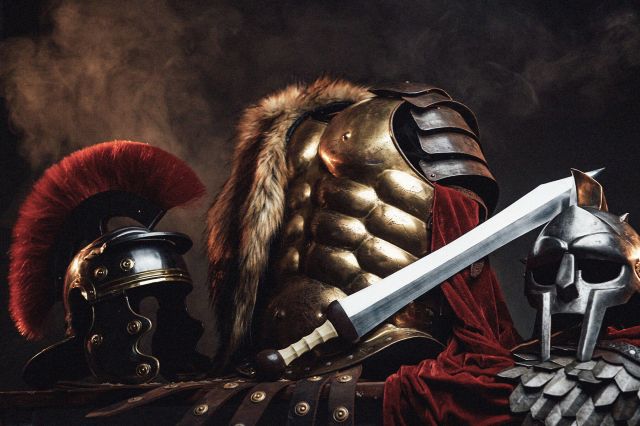5 Gladiators Who Deserve Their Own Movie
The first known gladiator competition in ancient Rome occurred in 264 BCE at the funeral of Brutus Pera, where three sets of combatants fought to the death. Before long, gladiator fights became extremely popular among the Roman public and were treated as entertaining spectacles despite the brutal violence displayed.
As the sport gained popularity, the number of gladiators grew, peaking in the year 107 CE when the Roman Emperor Trajan welcomed around 5,000 pairs of gladiators to perform during a 123-day series of celebrations throughout the city of Rome. Many of these battles took place at the Colosseum, which was built between 70 and 72 CE, and served as the site for the grandest gladiatorial contests. But there were also various smaller arenas and amphitheaters throughout the Roman Empire that played host to these competitions.
The gladiators of ancient Rome came from all kinds of backgrounds; some participated for the thrill of the sport and to earn the adoration of their fellow Romans, though most were enslaved people or prisoners fighting for their freedom. But regardless of social standing, successful fighters were often considered heroes throughout Roman society. While most of these gladiators have been forgotten to the annals of history, a few warriors are still known by name and discussed today. In honor of the 2024 release of Ridley Scott’s Gladiator II, the sequel to his Oscar-winning 2000 film Gladiator, here are five famous real-life Roman fighters who deserve their own movies.

Spartacus
Spartacus is the one gladiator on this list who already has his own movie, the eponymous 1960 film starring Kirk Douglas. That’s in part because Spartucus’ fame came not from his success in the arena, but from leading a major revolt of enslaved people against the Roman Republic from 73 to 71 BCE.
The details of Spartacus’ early life are murky. Some historians suspect he served as a soldier before abandoning the Roman army, and was later caught, sold into slavery, and sent to a Capuan gladiatorial training school. Spartacus never fought gladiatorial fights in the Colosseum, which wasn’t built until nearly 150 years after his death. Instead, he fought most of his battles with fellow trainees — that is, until he and around 70 fellow students escaped gladiatorial school and fled to take refuge on nearby Mount Vesuvius.
As leader of this new rebel alliance, Spartacus led raids against his former oppressors, pillaging various locations throughout the Roman countryside. His exploits attracted the attention of other escaped enslaved people, who went to Mount Vesuvius to join the rebellion, and in time, the group eclipsed 90,000 members. The guerrilla attacks continued, and the conflict became known as the Third Servile War, or Gladiatorial War. Spartacus and his men traveled across the Roman Empire amassing victory after victory, fighting against the oppressive rule that had forced them into slavery. These revolts came to an end in 71 BCE at a battle roughly 35 miles southeast of Naples, Italy, the likely location of Spartacus’ death.

















